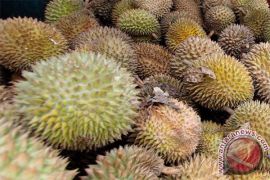"It is not true that the oil palm plantations have damaged the Lake Sentarum National Park (TNDS) and reduced the local fishermen`s income," said AM Nasir, the Kapuas Hulu district head in Putussibau on Saturday.
The local fishermen, he said, could earn other income when they failed to catch much fish due to high tide.
Meanwhile, Ujang, 45, a fisherman of Kapuas Hulu village of Pulau Majang said that each fisherman in the district could earn some 100 thousand rupiah per day.
In the meantime, another fisherman Abu Bakar, 55, also claimed that the oil palm extensification program in the Kapuas Hulu did not cause bad effect to the local fishermen.
According to Abu Bakar, the local fishermen had even got other kinds of fish as locally called "Kebali" and "Anak Ringau", which is worth five thousand rupiah each.
The Kapuas Hulu district head AM Nasir also said, the local administration would hold the water tourism activities at the Lake Sentarum National Park such as canoe races in a bid to lure foreign tourists.
TNDS is already known as a representative of wetland ecosystem of lake, freshwater swamp forest and tropical rain forest in Kalimantan province.
The seasonal lake in TNDS lies in the Kapuas river basin, about 700 kilometers from the estuary leading to the South China Sea.
According to the West Kalimantan World Wide Fund for Nature (WWF) data, TNDS has hundreds of fauna species, including mammals amounting 147 species, nearly 64 percent of mammals in Kalimantan are in TNDS, 31 species of reptiles, one of them is crocodile frog (Crocodylus raninus) that in Asia had been declared extinct since 500 years ago, AFES species of fauna (birds) totaling 310, and as many as 265 species of fish, or more than all freshwater fish species in the entire European continent.
In addition, Kapuas Hulu district has protected areas, such as national parks and protected forests around 1,626,868 hectares or 54.59 percent, forest cultivation area of about 764,543 hectares or 25.65 per cent and agricultural cultivation area of about 588,481 hectares of the lake instead, or 19.75 percent, and the lake area around 17,925 hectares.(*)
A057/f001/HAJM/H-YH
Editor: Jafar M Sidik
Copyright © ANTARA 2011











